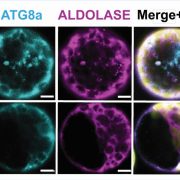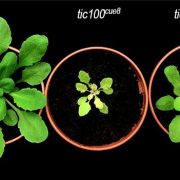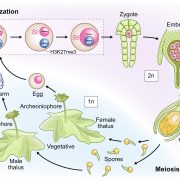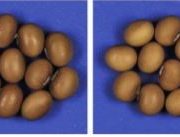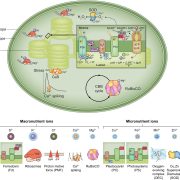Chloroplast double-stranded RNA can silence nuclear genes
Bélanger et al. investigate the silencing of nuclear genes mediated by chloroplast double-stranded RNA transgenes The Plant Cell (2023).
https://doi.org/10.1093/plcell/koad165
By Sébastien Bélanger
Background: Plants have three genomes: the nuclear, the mitochondrial and the chloroplast genomes. The chloroplast is maternally inherited so transgene insertion into the chloroplast genome prevents its dissemination into the environment. We know that double-stranded RNA (dsRNA) expressed from the chloroplast can be used for cross-kingdom RNA interference (RNAi)–based repression of pathogenic insects by knockdown of essential genes in those pests.
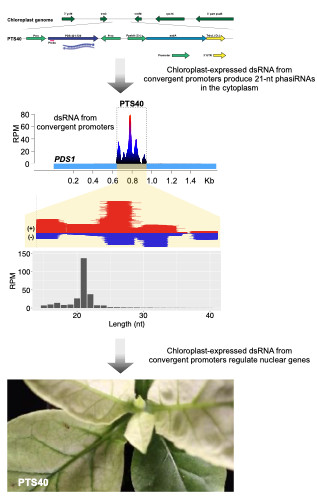 Question: Can dsRNAi transgenes expressed in chloroplasts regulate the expression of nuclear-encoded genes in the host plant via an RNAi pathway? We hypothesized that dsRNA molecules may escape from the organelle during development and enter the cytoplasmic gene silencing pathway to repress nuclear-encoded mRNAs.
Question: Can dsRNAi transgenes expressed in chloroplasts regulate the expression of nuclear-encoded genes in the host plant via an RNAi pathway? We hypothesized that dsRNA molecules may escape from the organelle during development and enter the cytoplasmic gene silencing pathway to repress nuclear-encoded mRNAs.
Findings: We inserted a dsRNA transgene into the chloroplast genome that carries a fragment of the nuclear gene encoding phytoene desaturase (PDS), which is essential for carotenoid and chlorophyll accumulation. Plants carrying this transgene in their chloroplasts showed a white ‘bleached’ phenotype indicative of little or no carotenoid and chlorophyll accumulation at different stages of plant development. This indicates that the dsRNA transgene expressed by the chloroplast can silence the expression of the nuclear gene. Unexpectedly, we found that plastid-expressed dsRNA transgenes produced 21-nucleotide phased short interfering small RNAs (phasiRNAs) in the cytoplasm. Interestingly, the plastid-expressed dsRNA caused gene silencing via a small RNA biogenesis pathway that includes “untriggered siRNAs”. Our results provide insight into the biosynthesis of phasiRNAs and RNA biology, and open potential opportunities for chloroplast engineering to modulate the expression of nuclear genes and thus affect plant traits.
Next steps: We want to understand how dsRNA transgenes expressed from the chloroplast genome enter the cytoplasm and bypass the initial biosynthetic steps of the phasiRNA pathway.
Reference:
Sébastien Bélanger, Marianne C. Kramer, Hayden A. Payne, Alice Y. Hui, R. Keith Slotkin, Blake C. Meyers, Jeffrey M. Staub (2023). Plastid double-strand RNA transgenes trigger phased small RNA-based gene silencing of nuclear-encoded genes. The Plant Cell. https://doi.org/10.1093/plcell/koad165



